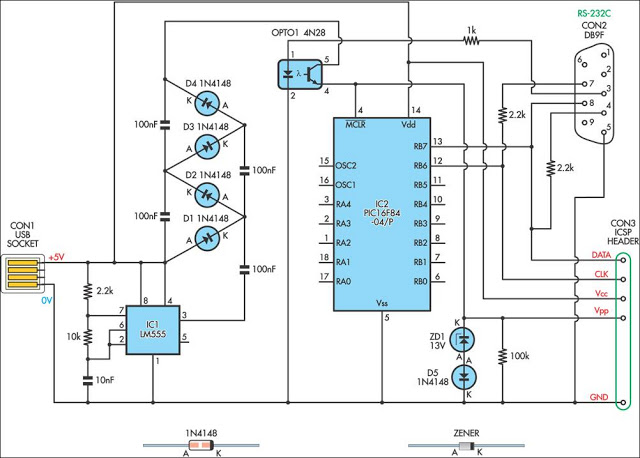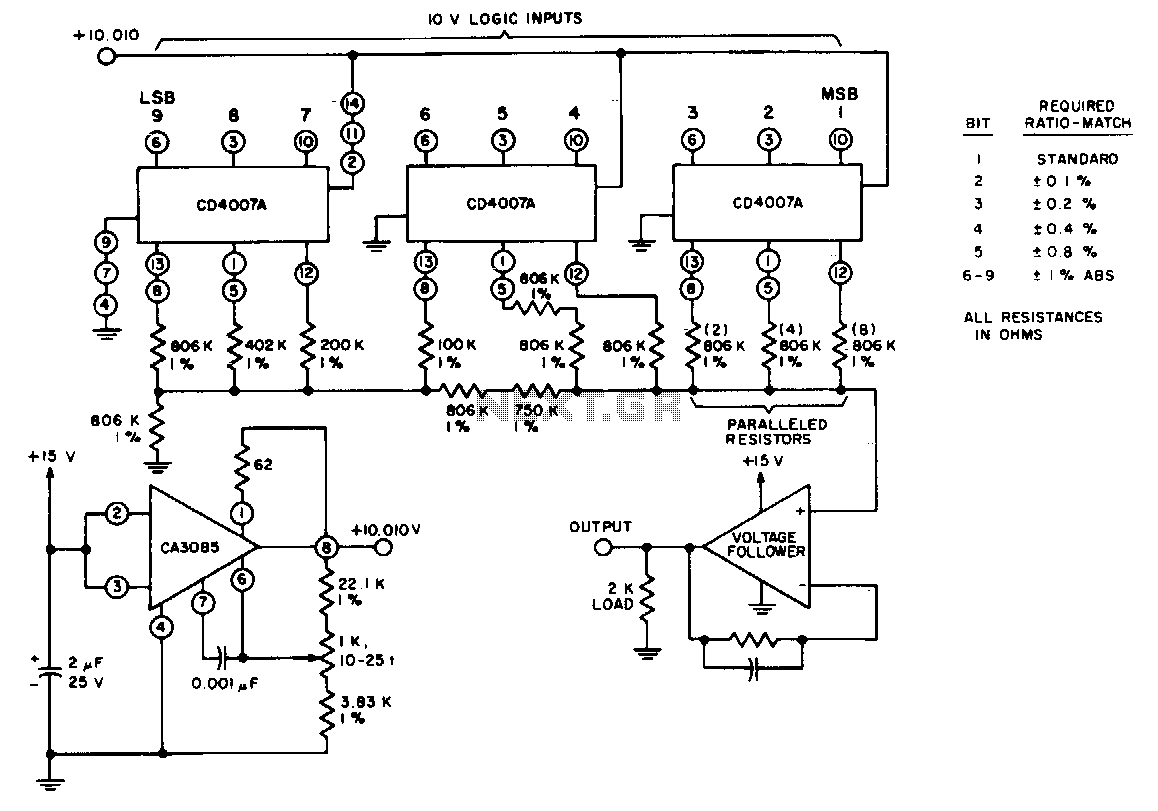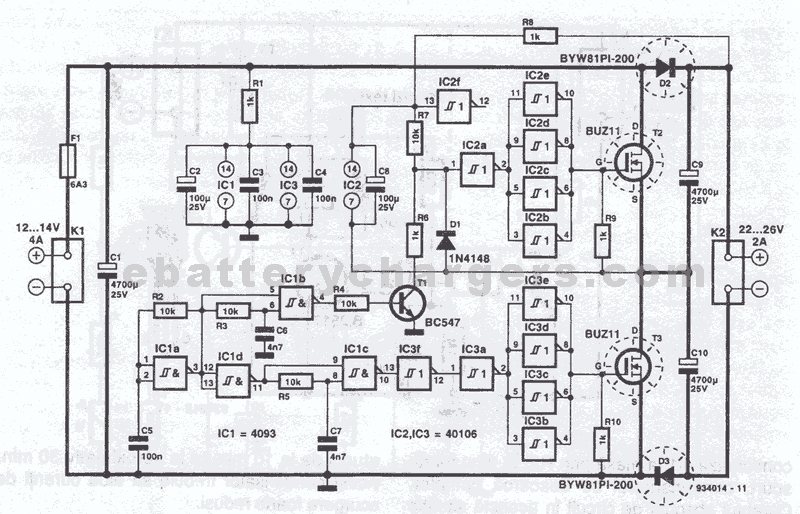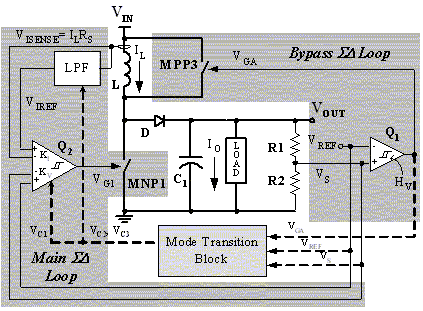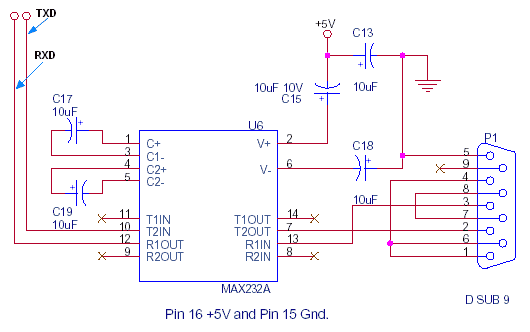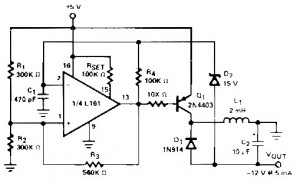
USB to RS232 converter

The FT8U232AM requires a small number of external components to produce a device that converts USB to TTL level RS232 signals. All that is needed is a TTL to RS232 converter to provide the 12V RS232 logic levels. The FT8U232AM and supporting components are also available as a complete module, called USBMOD1, in a 32-pin DIL IC package, making the whole project very easy to build.
The FT8U232AM is a versatile USB to TTL level RS232 converter integrated circuit that facilitates the conversion of USB signals to RS232 logic levels. This device is particularly useful in applications where legacy RS232 communication is required while interfacing with modern USB-based systems.
To implement this circuit, the FT8U232AM requires minimal external components, which simplifies the design process. The primary additional component needed is a TTL to RS232 level converter. This converter typically includes a charge pump circuit to generate the necessary +12V and -12V levels for RS232 communication, which are essential for ensuring compatibility with standard RS232 devices.
The USBMOD1 module, which incorporates the FT8U232AM, is designed in a 32-pin Dual In-Line Package (DIL) format. This packaging allows for easy integration into various projects and prototyping environments. The module also features onboard decoupling capacitors and necessary pull-up resistors, which further ease the assembly process and enhance circuit stability.
For operation, the FT8U232AM connects to the USB interface of a host device, such as a computer or microcontroller. The module translates the USB data into TTL logic levels suitable for direct interfacing with microcontrollers or other digital devices. Conversely, it also converts TTL signals back into RS232 levels for communication with RS232 peripherals.
This design approach provides a compact and efficient solution for projects requiring USB to RS232 communication, making it ideal for developers and engineers working on legacy systems or interfacing with older hardware. The straightforward integration and minimal component requirements significantly reduce the complexity and time involved in building USB to RS232 interfaces.The FT8U232AM requires a small number of external components to produce a device that converts USB to TTL level RS232 signals. All you need to add is a TTL to RS232 converter to provide the 12V RS232 logic levels. The FT8U232AM and supporting components is also available as a complete module - called a USBMOD1 - in a 32pin DIL IC package, making t
he whole project very easy to build. 🔗 External reference
The FT8U232AM is a versatile USB to TTL level RS232 converter integrated circuit that facilitates the conversion of USB signals to RS232 logic levels. This device is particularly useful in applications where legacy RS232 communication is required while interfacing with modern USB-based systems.
To implement this circuit, the FT8U232AM requires minimal external components, which simplifies the design process. The primary additional component needed is a TTL to RS232 level converter. This converter typically includes a charge pump circuit to generate the necessary +12V and -12V levels for RS232 communication, which are essential for ensuring compatibility with standard RS232 devices.
The USBMOD1 module, which incorporates the FT8U232AM, is designed in a 32-pin Dual In-Line Package (DIL) format. This packaging allows for easy integration into various projects and prototyping environments. The module also features onboard decoupling capacitors and necessary pull-up resistors, which further ease the assembly process and enhance circuit stability.
For operation, the FT8U232AM connects to the USB interface of a host device, such as a computer or microcontroller. The module translates the USB data into TTL logic levels suitable for direct interfacing with microcontrollers or other digital devices. Conversely, it also converts TTL signals back into RS232 levels for communication with RS232 peripherals.
This design approach provides a compact and efficient solution for projects requiring USB to RS232 communication, making it ideal for developers and engineers working on legacy systems or interfacing with older hardware. The straightforward integration and minimal component requirements significantly reduce the complexity and time involved in building USB to RS232 interfaces.The FT8U232AM requires a small number of external components to produce a device that converts USB to TTL level RS232 signals. All you need to add is a TTL to RS232 converter to provide the 12V RS232 logic levels. The FT8U232AM and supporting components is also available as a complete module - called a USBMOD1 - in a 32pin DIL IC package, making t
he whole project very easy to build. 🔗 External reference
